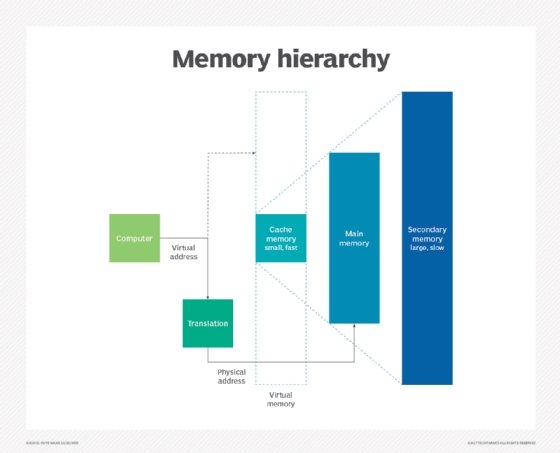JEDEC
What is JEDEC?
JEDEC is a global industry group that develops open standards for microelectronics. JEDEC originally stood for Joint Electron Device Engineering Council, but it's now known as the JEDEC Solid State Technology Association. The group has more than 3,000 volunteer members representing nearly 350 member companies.
JEDEC consists of 50 committees and subcommittees that propose and develop microelectronics open standards, publishing updates as necessary. All JEDEC standards are listed on its website, and members gather several times a year to address the changing needs of the tech industry. After a committee approves a standard, it's voted on by the board of directors. Each JEDEC member company gets one vote.
JEDEC conducts workshops and conferences in various locations worldwide. It also publishes documents and reports addressing its various standards activities.
JEDEC memory standards
JEDEC standards cover the entirety of the electronics industry, from manufacturers to consumers. Packaging, testing, quality and reliability are all considered when standards are developed. JEDEC memory standards largely fall into three categories.
1. Flash memory
Flash memory products have high density, low power use, high performance and low cost. As flash uses grow, JEDEC has created industry standards to cover all areas of flash memory. The current focus is on solid-state drives (SSDs), Universal Flash Storage, embedded MultiMediaCards and Crossover Flash Memory.
The JC-64 committee sets and updates standards in this category. Its primary focus is on solid-state flash technology, and it also defines standards for embedded memory storage and removable memory cards.
2. Main memory
The JEDEC main memory standards encompass synchronous dynamic RAM (SDRAM). JEDEC has standards for two types of double date rate: DDR4 and DDR5. The DDR standards aim to have higher performance than traditional DRAM technologies and a more user-friendly interface.
The JC-42 Committee for Solid State Memories develops the main memory standards. DD4 speeds range from 2,133 megahertz to 3,200 MHz, while DD5 speeds extend up to 6,400 MHz.
3. Mobile memory
In an effort to keep up with the advancement of mobile technology, JEDEC has set standards focusing on memory density and performance. Low-power DDR (LPDDR) standards boost memory speed and efficiency for mobile devices.
The Wide Input/Output standards deliver high-bandwidth memory, while Wide I/O DRAM meets industry demands for integration. LPDDR and Wide I/O standards are supported by the JC-42.6 Committee for Low Power Memories.
Other areas of focus for JEDEC standards include memory module design, memory configurations (JESD21-C), registered outlines (JEP95), part/model guidelines (JEP30), electrostatic discharge, wide bandgap power semiconductors and lead-free manufacturing.

Benefits of JEDEC standards
JEDEC's goal is to create common standards that manufacturers and consumers can use. Universal standards for technologies lower the chance of misunderstandings and confusion for consumers when selecting a product. It also facilitates the interchangeability of products.
The standards JEDEC committees develop are intended to serve as building blocks for thriving technology markets. These types of general standards also help technology suppliers maximize their investments in research and development.
Partnerships and industry collaboration
To stay on the leading edge of standards development, JEDEC partners with multiple organizations in the electronics industry. Working with other organizations on the development and revision of various standards reduces the risk of duplicate development efforts and promotes consistency across different fields.
These partners include Compute Express Link, Consumer Technology Association, Defense Logistics Agency, IPC International, National Institute of Standards and Technology, Open Compute Project, SAE International and Storage Networking Industry Association.
JEDEC's history
JEDEC was first established in 1958 with just two councils: tubes and semiconductors. In its early days, the organization primarily existed to assign part numbers to different devices. Over time, its responsibilities grew to include developing testing methods for the microelectronics industry and product standards that have shaped the growth of the semiconductor industry.

Flash memory and mobile memory are key standards JEDEC works on, but the group has also created open standards for computer memory, developed the electrostatic discharge symbol used internationally on semiconductor devices and published a manual of common definitions used in the semiconductor industry.
Prior to JEDEC standards, there was little competition in the semiconductor industry. That changed as more committees were formed and membership grew.
Communications companies and the military drove industry standards during the 1970s, and when the PC was introduced in 1981, demands changed again.
The semiconductor mass market grew along with PC use. JEDEC developed open standards for DRAM components and memory modules, as well as for packaging and manufacturing processes.
The automotive industry became involved in the 1990s, as military standards were converted to commercial standards. JEDEC made its standards available for download online in 1997.
Outsourcing manufacturing in this same time period meant an emphasis on international standards. They became a top priority for JEDEC. In 1999, JEDEC signed an agreement with the International Electrotechnical Commission and Electronic Industries Association of Japan to make JEDEC standards available internationally. This was also the year JEDEC implemented its name change to the JEDEC Solid State Technology Association.
Over the years, JEDEC standards have expanded into cloud, mobile computing and other developing technologies.
Recent standards and JEDEC's future
Recent JEDEC standards include the Standard Manufacturers Identification Code, July 2024; Graphics DDR7 Synchronous Graphics RAM, April 2024; and DDR5 SDRAM specification, July 2024.
The organization is expected to continue to develop advanced technology standards. It will remain an important point of collaboration and standards development for the technology industry.
Flash memory is part of most consumer electronics and enterprise storage. Learn all about flash, including use cases and future directions.






